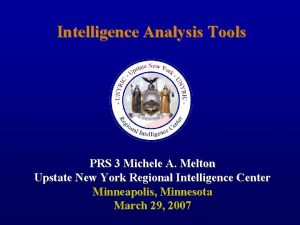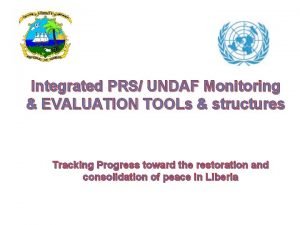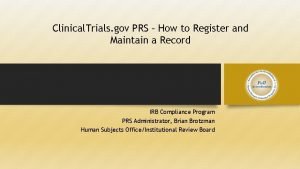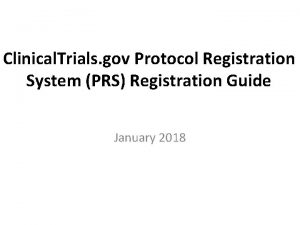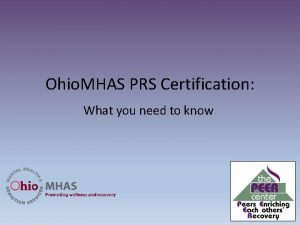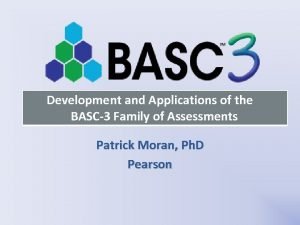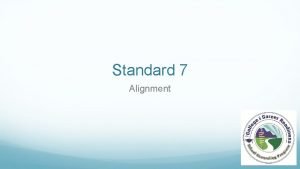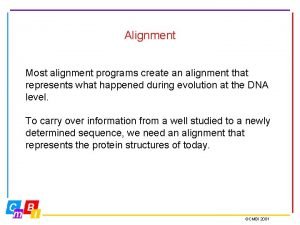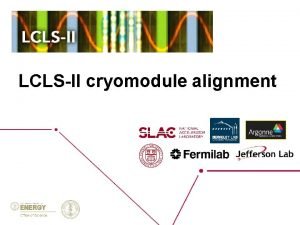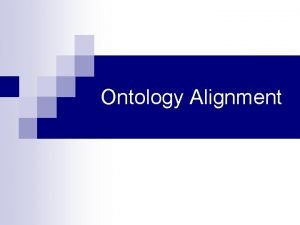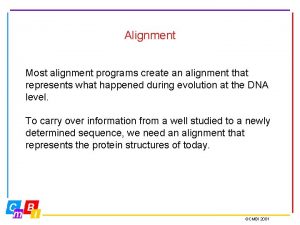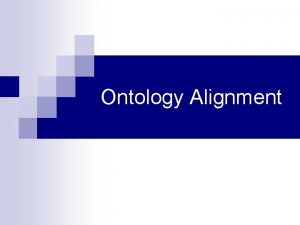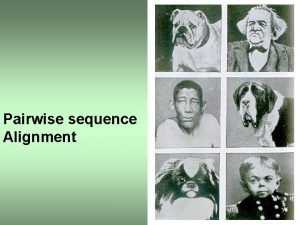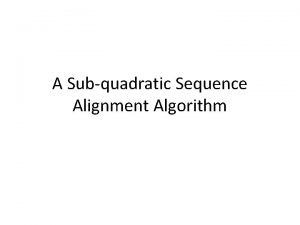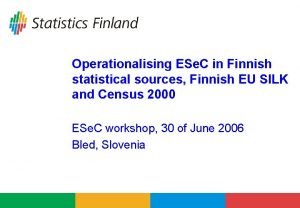PRSp Alignment Finnish Aid in a PRS Context















- Slides: 15

PRSp Alignment Finnish Aid in a PRS Context Helsinki Workshop 19 -22 May 2003 1

Alignment – why worry? • PRSps have entered a new phase – from design to implementation • Implementation requires consistent & coherent external support behind PRSP priorities (targets) & country capacity to deliver • Non-aligned donor strategies risk countries devoting scarce resources to managing donors rather than meeting targets! 2

Alignment – what is it? • For external partners - the extent to which all aid instruments & modalities are congruent with the discipline & cycle of the national PRS, MTEF & budget. • For partner governments - the extent to which the MTEF & the budget are subject to the national PRS (& vice versa? ). 3

More definitions • IMF (2003) distinguishes between: A. Temporal Alignment of country’s own processes with PRS & national budget cycle or donor processes with country’s processes e. g. aligning timing & phases of donor programmes with the budget/PRS cycle. B. Policy Alignment, where policies supported by donor programmes are derived directly from PRS. 4

Harmonisation & streamlining • Related concepts • Harmonisation refers to the extent to which there is a commonality in donor policies, procedures & practices • Streamlining refers to the need to simplify, coordinate & reduce the number of procedures, indicators, missions, analytical reports etc. 5

Aligning with the PRSp (1) • Extent of alignment will vary with country contexts & ‘strength’ of the PRSp & PRS process • Alignment at the country level includes drawing on or complementing the PRSp in all stages of the PRS cycle • Optimally, the principal content of external partner strategies is derived directly from the PRSp (goals, targets, priorities etc) 6

Aligning with the PRSp (2) • Where an assistance prog. is not derived directly from the PRSp it may complement it, e. g. by addressing areas of weakness, updating analyses, feeding in lessons • Optimally, assistance programmes are implemented through existing partner Govt. institutions (disbursement, procurement, performance monitoring & review) 7

Aligning with the PRSp (3) • External partner schedules are aligned with Govt. budget, MTEF and planning cycles • Assistance programmes are coordinated & harmonised with other donors to promote selectivity, comparative advantage & reduce transactions costs. 8

Phases of PRSp Alignment Country strategies linked to PRSP goals targets & macro framework Policy formulation Shared analytical work; TA identified by Govt Financing on-budget; in line with budget/MTEF cycle; conditions & benchmarks streamlined with PRSP matrix Financing PRSP process: Results oriented, evidence based policy making? Poverty analysis M&E Monitoring, review & audit drawing on govt. systems; annual PRSP review Policy impln Communication Consultative & transparent processes Projects/programmes/ budget support complement PRSP; implementation managed by govt agencies 9

Country Experience • Ethiopia – complex environment, many external agencies • Following end of war much reengagement based on a relatively successful PRSp process – extensive participation • Pool of capable Go. E officials; Govt. leadership in preparation of PRSP (SDPRP) clear. 10

Ethiopia • SDPRP starting point for common donor action; draws on sector progs. in health, educ, water, roads. • DAG Core Group/donors agreed rules of engagement for support of SDPRP process, including a Joint Donor Fund. • Commitment of most donors to build strategies on SDPRP 11

Ethiopia • Progress on a common framework for budget support based on common matrix for performance assessment derived from SDPRP & alignment with annual PRSP review & budget cycle • Share of GBS likely to rise to 30% • SPA a key player 12

Ethiopia • Harmonisation Task Force – adopted menu approach seeking to harmonise across all 3 main aid modalities: projects, programmes & GBS • Politically sensitive • Harmonisation of project aid the hardest to achieve; much assistance to SWAPs still projectised 13

Alignment risks & challenges • All the donors ‘eggs in one basket’! What do Govts. do when things go wrong? • Macro-frameworks & MTEF ceilings – can all aid be ‘on-budget’? • Disconnects between donor HQs and country level • Lack of alignment across/within Government 14

Alignment risks & challenges • Dangers of over-centralisation? i. e. heavy focus on aligning with national institutions/processes. • What’s the ‘right’ level of participation? The need to manage expectations & support a robust political process, particularly around the budget. 15
 Prsp
Prsp Global alignment
Global alignment Global vs local alignment
Global vs local alignment Difference between local and global alignment
Difference between local and global alignment Global alignment vs local alignment
Global alignment vs local alignment Local and global alignment
Local and global alignment Prs
Prs Prs tracking
Prs tracking Prs registration
Prs registration Clinical trials prs
Clinical trials prs Ebased academy peer support
Ebased academy peer support Basc-3 ages
Basc-3 ages Mrt prt
Mrt prt Web application architecture example
Web application architecture example Greenhill park medical centre
Greenhill park medical centre First aid merit badge first aid kit
First aid merit badge first aid kit






